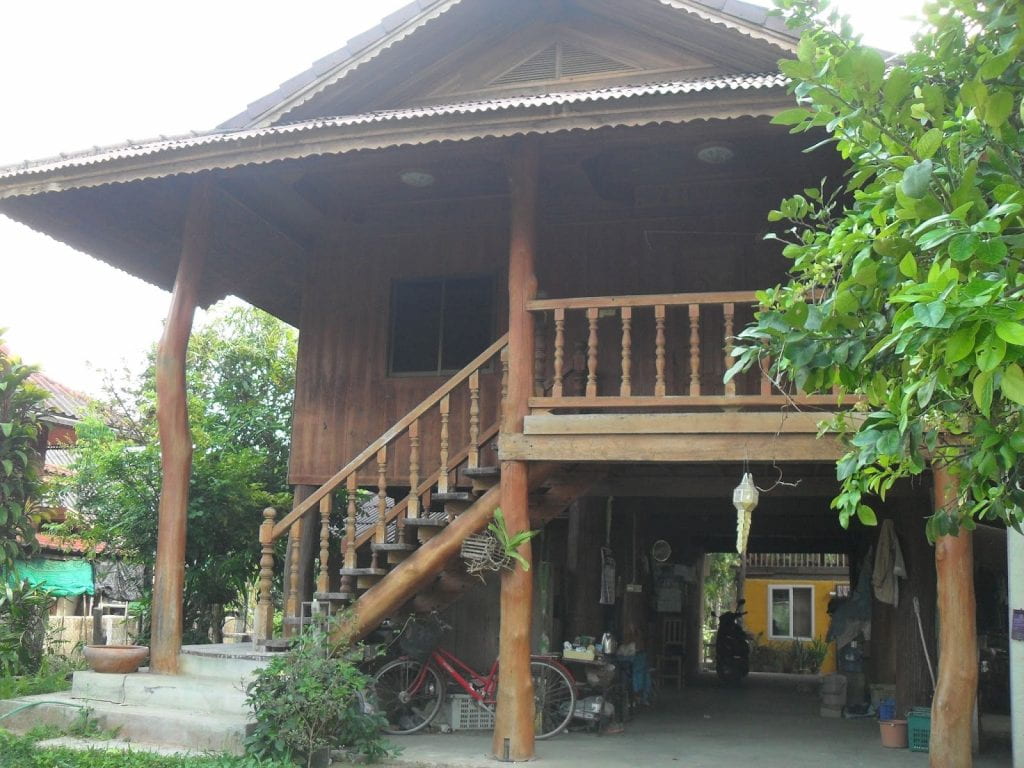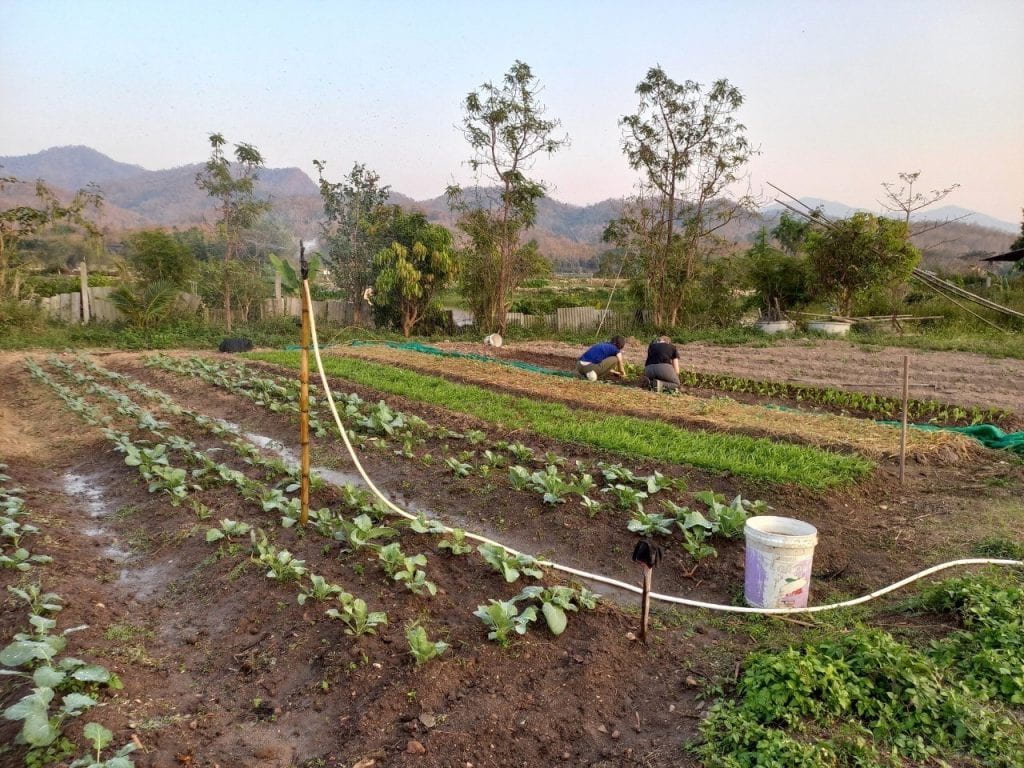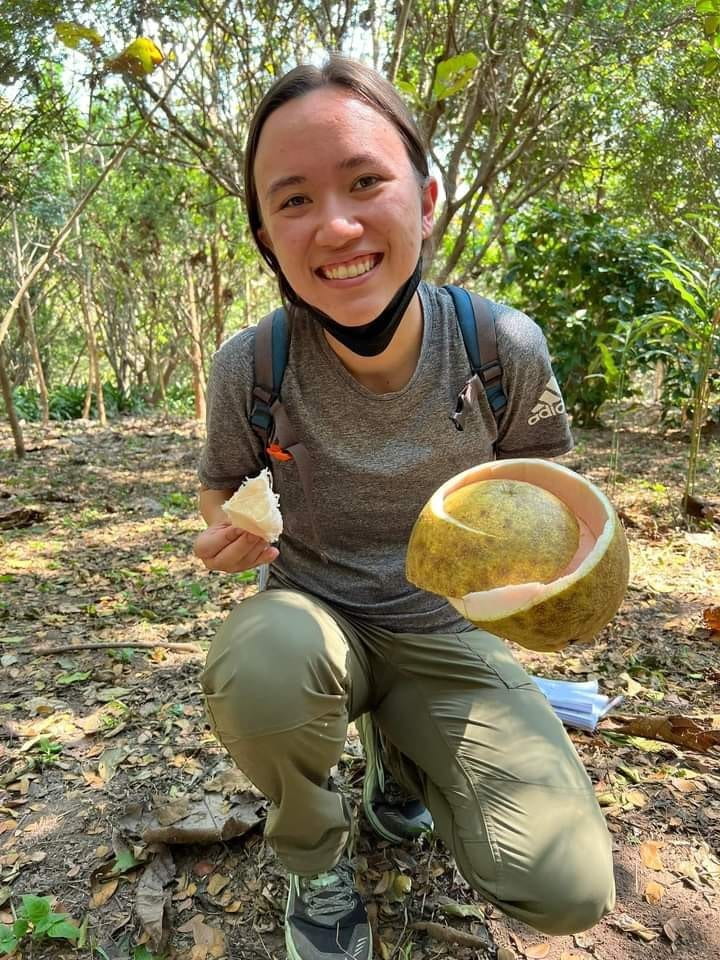Living & Learning in Maetha: An Environmental Movement Prioritizing Human Health
Hello! As Thailand begins moving into summer, my time here is approaching the halfway point. Here in Chiang Mai, the burning season has arrived, where nearby farmers burn their old fields. Luckily, I have not noticed any increase in smoky air yet.
What I have noticed is how hot it has gotten. When I walk out on the street, it is as if I had pulled open the door of my oven at home to a faceful of preheated air. It is getting mighty hot, and I look forward to heading out to the higher elevation forests next week for our forest course where it is a bit cooler.
You know what has also warmed up a lot these past few weeks? My brain, as it makes so many new and exciting connections!
Last week, I had a soul re-energizing and very educational experience in Maetha. We stayed in Maetha for 2 weeks as part of the course, Sustainable Food Systems. For this blog post, I hope to talk about what I learned about sustainable movements here.
Maetha is the name of a village just an hour’s drive from Chiang Mai. During the Green Revolution farmers planted conventional tobacco and baby corn, which was largely monocrop and required pesticides. However, in the 1980s, a group of farmers decided to switch to organic farming. By 2017, 38% of farmers belonged to the Maetha Sustainable Agriculture Cooperative.
When we arrived at Maetha, I immediately noticed how open to the air and close together the houses were. Many of the houses were built in the traditional Lanna (Northern Thai) style. The second floor, made of beautiful teak wood, is raised on stilts over the first floor to avoid flooding during the rainy season. However, we spent most of our time on the first floor eating meals and talking to various family members and neighbors who would walk in and out of the house throughout the day. Then, we would visit various peoples’ farms, learn about polyculture farming, where you plant many different crops together instead of just one, and get a chance to try a farming activity, such as mixing soil or gathering seeds. I realized that there is a strong sense of community, trust, and camaraderie here. How did this relate to their strong identity as organic farmers?

Here is my host family’s house.

Planting mustard in the community gardens near the organic agriculture educational center. In a polyculture garden, there are many different crops in each row, like you see here. If one crop gets infested with bugs one year, there are still other healthy crops to bring stability.
As part of the food systems course, our instructors set us up with many people throughout Maetha to have conversations. With these conversations, I learned that there are two main reasons for why farmers here switched to organic agriculture. The first is for health reasons. Here, getting sick from pesticides is not a vague concept. It seemed like everyone knew an older family member who got very sick from handling the pesticides that were provided by the produce companies. These stories were told so often that I could tell it was one of the main reasons for why farmers wanted to stop conventional farming. The second reason was that farmers would be caught in debt cycles. The debt cycles are from needing to invest money at the beginning of each season and receiving little return from the middlemen after selling the crop. Farmers who got sick from the chemicals would also acquire large hospital bills. These cycles limited economic autonomy, decreased financial security, and increased feelings of competition between farmers.

We stopped at a nearby baby corn field to compare it to polyculture organic fields. Some families still grow conventional baby corn, and organic farmers respect their decisions, as they once also grew conventional baby corn in the 80s and understand the benefits that conventional farming brings (less time weeding, for one).
Now that various households have switched to organic polyculture farming, and created an organic co-op, they said that there is less competition. I also noticed that families would help each other out a lot. One afternoon, after walking back to the host house with my classmate and roommate, our host sister took us to help another family plant sweet potatoes in a nearby field. Another time, we were told to pick purple flowers off of a vine from a neighbor’s yard, which later we boiled into a stunning blue-purple tea!

Butterfly pea flowers, which my roommate and I were asked to pick one afternoon by our host sister. Then, that evening she called us into the kitchen and surprised us with the bluest iced tea. Add a squeeze of lime and the tea turns purple.
I also noticed that with the switch from conventional monocrop agriculture to polyculture, families created a knowledge base about local plants and were able to make long-term decisions that would carry down intergenerationally. For example, we spent multiple days with one woman, Pi Pui, who takes care of an agroforest. Her parents planted the agroforest by planting hundreds of varieties of trees and bushes over what was previously a tiered single-crop style plot of mountainside. After 30 years, the plot is a mature and self-sustaining forest. Pi Pui’s family knows what uses each plant has and can harvest food and other ingredients from the forest whenever they want. Compared to cash crops, which are grown and cut down to provide yearly profits, this forest lives and grows bigger through multiple generations.

In the agroforest, each plant has a purpose. Some make fruit, like the pomelo I am eating here. Others grow edible leaves and stalks to flavor soups. Some provide wood for building furniture or making twine. My favorite was a rain tree that attracts a certain kind of insect. The insects will go to the bathroom on a piece of wood that you hang in the tree, and then once a year you collect the wood and sell the droppings, now a dark red sappy texture, at the market as a high quality adhesive.

In my experiential learning workbook, we were tasked to write down all of the plants we saw within a 20 meter line in the agroforest. This was one of my favorite projects because I was astonished by how many plants we found in what looked like a plain everyday forest.
When I was listening to these conversations and learning about the success of this organic polyculture program, I noticed that there was something very different about their approach to sustainable farming than what I was used to hearing in the United States. One day, I simply asked someone in my host family, why is organic farming important? She gave a few reasons, all related to human health or family security and autonomy. I realized that she had not mentioned the environment as a reason. Human health is by far the number one guiding reason for any sustainable framework they farmers here had with agriculture.
After two weeks in Maetha, we spent 2 nights at a coffee farm where the coffee trees are grown under the canopy of a beautiful thick mountainous forest. This method is also organic and sustainable. This time, however, the owner’s number one priority is to protect the health of the forest. So far I do not think that this method of sustainability is better or worse than that of Maetha, but I am noticing that it is different.
These comparative experiences made me reflect upon the variety of environmental movements that exist in the world. In the United States, mainstream environmental movements separate human and nature. For example, I remember learning about different conservation or national park efforts and narratives about protecting a non-human “wilderness”. While I know that there are many types of ways that various people experience the environment in the United States and, as a result, there are a variety of environmental movements, this wilderness-centered approach is still dominant.
Therefore, being at Maetha gave me a solid understanding that you can successfully engage in sustainable agricultural practices without needing to focus solely on protecting the nonhuman environment.
Families who grow food for themselves and on their land are physically working close to this land. Whether they use pesticides or not will directly affect their health. They are also making choices about their land that will affect their children and future generations. The incentives to make the land healthy are strong. Maybe an environmental movement that is prioritizing human health is just as successful, if not perhaps even more successful, than an environmental movement that prioritizes nonhuman health.
When I return back to the United States, I hope to ask myself, how do communities continue their commitment to sustainable farming over many generations? What makes an “ideal” environmental movement?
Next week, my class will stay in Karen villages in the northwestern mountains and learn about forest management. After learning so much during our first excursion, I am so excited to see what I will learn during this next one.
Talk to you later! Sawaddee ka!
Anna